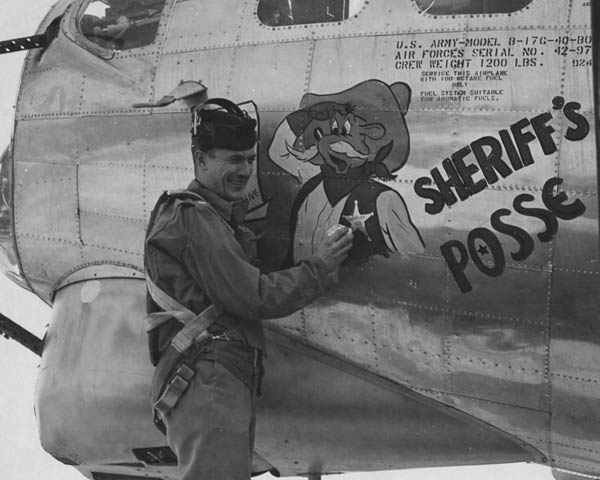Hi everybody, Im going to be starting a revell b-17G in the next couple weeks as many of you know it is molded with raised panel lines. I dont think it would be appropriate to rescribe all of the panel lines but i dont know if the raised panel lines are appropriate either. I am planning on doing it in a NMF and am thinking it might look better if i just sand the panel lines down a bit. Any insights you guys have would be greatly appreciated.
It would be difficult to maintain a consistent panel line height if you tried to sand them all down. You may want to look at some close up pics of the real thing to see what you would want to scribe, and what you want to keep raised. You will also lose some panel detail depending on how well the seams come together, so you’ll probably want to scribe those lines back in.
I would scrape/sand the panel lines off. Then, represent the panels by masking and applying different shades of paint or metalizer to represent different panels.
Don,
I think you are on to something there. On real aircraft the skin joints are usually so tight you can’t fit a piece of paper between them. The access panels are of course looser but even those if done correctly are only about big enough to fit your credit card into. I think a lot of modelers over do this effect. One thing I don’t see modeled often is dirty greasy residue weeping out of various skin panel lines. This would be obviously most common around engine nacelles, but would also be found around turbos, gun bays leaking fuel tanks, really anything within reason that a loose skin joint can allow these fine particles to escape from. This would be represented by a sharp demarcation line on the offending shin panel and gradually tapering off into the slipstream. You can even observe this on modern airlines if you look closely. Obviously also the older more beat up the aircraft is the more pronounced this could be.
I realize you are doing bare metal but on painted aircraft, if looking at the model from the distance that a lot of picture are taken of the real thing you really don’t see a lot of individual skin lines. Just my opinion
Tim
I know that I am in the minority on this subject, but look at the real deal, the panel lines and rivets are not recessed…
Good Point. Some aircraft are flush and some have overlapped skins. Scale rivets though are still going to be indistinguishable at that scale.
“I know that I am in the minority on this subject, but look at the real deal, the panel lines and rivets are not recessed…”
Yea but at 1/48 scale I don’t think the raised panel lines would be a correct representation. I think the best idea would be to sand them smooth and mask and spray different shades of alclad to represent the panel lines. I definitely agree they shouldn’t be rescribed though.
That picture looks like it is at a distance of about 1 inch in model distance. The trick would be to make panel lines visible at one inch, when someone looks at it with a high power magnifier, but not see the lines when they look at it from twenty or thirty inches.
We need to consider scale viewing distance. To determine this, take a common viewing distance and divide by the scale. So twenty inch viewing distance at 1/72 scale is 120 feet.
But you can see panels on bare metal finishes because of different alloys on different panels, or different mill finishes, including which way the sheet that makes up the panel came through the mill rollers. So different panel appearances on bm panels is different than on painted aircraft.
I know in some of the older issues of FSM various projects used Aluminum foil to represent bare metal finishes. Could you alternate painted plastic surface with sections of foil to achieve a 3 dimensional texture?
If you wanna get real intricate and hardcore use Archer rivet decals and overlapping panels of foil after you sand off the raised panel lines. That would be about as accurate as possible in 1/48 scale. But it would take some serious dedication and patience to pull off…
Here is an example of an LB-30 (B-24, Liberator II) where you can see almost every rivet on the nose at 20-30 ft, I’m guessing.
“If you wanna get real intricate and hardcore use Archer rivet decals and overlapping panels of foil after you sand off the raised panel lines. That would be about as accurate as possible in 1/48 scale. But it would take some serious dedication and patience to pull off…”
I’m not going to do the foil but these archer rivet decals are intriguing to me. For a b-17 in 1/48 what would be the appropriate size to use. They have 3 options under the aircraft rivet tab. .008, .011, and .014
Take all panel lines off.Complete the NMF paint job then before sealing use a small rubber piece of a vacuum cleaner belt for a guide .Then use a fine tip charcoal pencil and carefully trace your panel lines throughout the aircraft.The panel lines can come off w/ q-tip and water.
